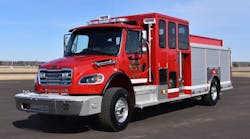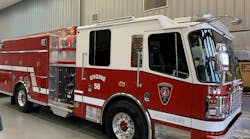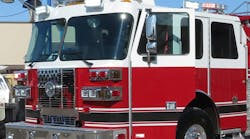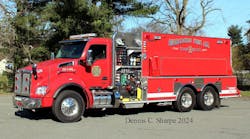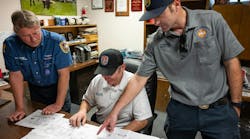The first is for your department to conduct an inspection of the cab in which firefighters are going to be seated and belted for their next response. Everything within that cab enclosure must be secured to the cab itself.
The cab enclosure can be an extremely dangerous place during an apparatus rollover. Even the smallest piece of equipment may become lethal if the apparatus rolls over. In recent inspections I have conducted I have found flashlights, map books, hydrant wrenches, forcible entry tools, and even self-contained breathing apparatus (SCBA) unsecured. It is not good enough just to have an SCBA in the bracket; it must be secured to the bracket in accordance with the applicable National Fire Protection Association (NFPA) standards. How sad it would be to have a firefighter seated, belted, in an enclosed cab survive a violent rollover only to become seriously injured or worse when hit in the head by an unsecured SCBA.
Next is a national policy that mandates the use of seatbelts for all emergency vehicle operators and their passengers. Many states have chosen to exempt emergency vehicle operators from the use of seatbelts. How ironic that the very people that are in the business of providing public safety are the same group that would seek a seatbelt exemption. I have heard all the excuses - my gun and holster are in the way, I cannot work on the patient, it will slow me down.
How can firefighters promote smoke detectors and other fire safety measures only to ignore issues that affect their personal safety. What makes it worse is when we go to the scene of an accident, find an ejected civilian and proclaim to the other emergency scene workers that the victim would have lived if a seatbelt had been worn. Then all the emergency scene workers nod in agreement, go back to their vehicles and fail to heed their own advice after witnessing yet another preventable highway fatality. If people in the business of providing public safety are going to go out and talk the safety talk, then they themselves must walk the safety walk.
It is imperative that every fire department adopt a mandatory seatbelt policy. Many fire chiefs may have a problem with such a policy, particularly in the volunteer sector. The cry goes out, how can I mandate the use of seatbelts - my firefighters are volunteers. The answer lies in human nature and enforcement of policies and procedures. Human nature tells us that there is an overwhelming desire for firefighters to ride in and drive fire apparatus. So that makes the next part of the equation easy to deal with enforcement.
In my volunteer fire station, if you ride on or drive fire apparatus without a seatbelt, you are suspended for 30 days from riding on and driving fire apparatus. An interesting aside in this case - the fire department has had 100% compliance and the enforcement has been taken on by the firefighters themselves.
Look back at the July 2000 Emergency Vehicle Operations column on rollover case studies. If the drivers and passengers involved in those seven case studies cited had worn their seatbelts, firefighter lives would have been saved and serious injuries would have been avoided. In fact, that column probably would not even have been written.
Finally, an update on the apparatus accident we first reported in this column in the September 2000 issue. Thankfully, we can report that all of the injured firefighters are on the road to recovery and are expected to recover fully. Also, the insurance company has totaled the tiller aerial ladder involved in the accident.
Michael Wilbur, a Firehouse® contributing editor, is an FDNY lieutenant in Ladder Company 27 in the Bronx and a firefighter in the Howells, NY, Fire Department. He is an adjunct instructor at the New York State Academy of Fire Science and the Orange County Fire Training Center. Wilbur has developed and presented emergency vehicle operator courses throughout the country and has consulted on a variety of fire apparatus issues.



